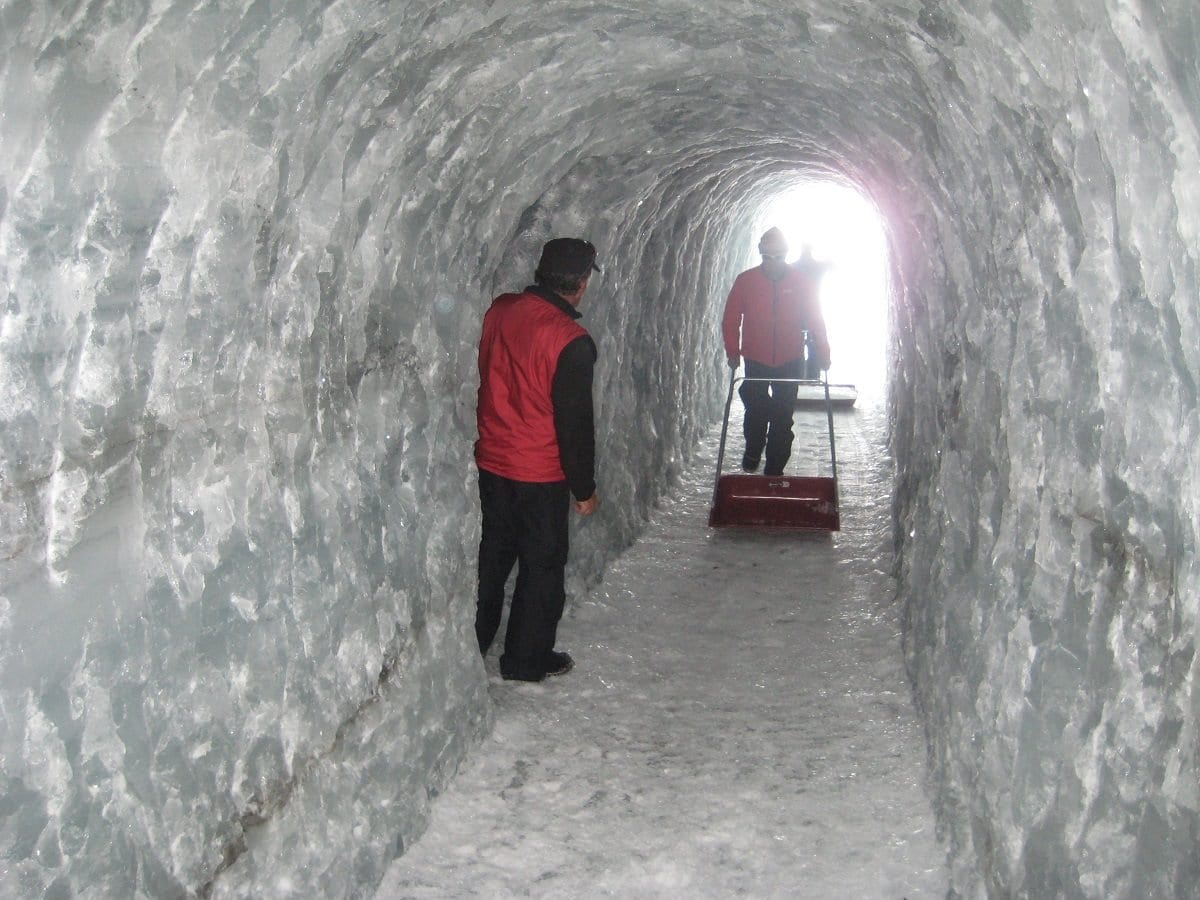Parts of the ice of the Juvfonne snow patch in Jotunheimen are 7600 years old, which makes it the oldest dated ice on mainland Norway.
“We were a little surprised to find that the ice from Juvfonne was that old,” says Rune Strand Ødegård, an associate professor at the Norwegian University of Science and Technology’s (NTNU) Department of Manufacturing and Civil Engineering in Gjøvik.
Between 9000-1000 years ago, the ice in this area melted as the climate warmed, which was at its warmest between 7-8000 years ago. The new results from Juvfonne suggest it might be possible to finding ice from the last ice age in the high-mountain areas of southern Norway.
“There is likely even older ice, as this 7600 year old ice was found at an elevation of 1850 meters. The old ice found in Juvfonne is dated to the middle of the warm period after the last ice age, so it’s really exciting to have found ice that survived the last warm period,” Ødegård said.
Ice samples to be analysed in Switzerland
Juvfonne is a small ice field at the base of Galdhøpiggen in Jotunheimen. A tunnel is chiseled into the ice at the base of the field. A sample was taken from this tunnel and sent to the Paul Scherrer Institute in Switzerland for carbon dating. The results came back: the ice was 7600 years old.
So far, the ice has only been dated. No other analysis has been done, as the age of the ice was unknown.
“The results allow for the possibility of organic material having been frozen into the ice field for 7000 years, which will lead to new knowledge. However, we haven’t done a detailed analysis for organic material yet,” Ødegård said.
The results will hopefully lead to new research, and to the possibility of finding even older ice and organic material preserved under the glaciers in Jotunheimen.
The most well-known archaeological find from Jotunheimen’s glaciers is Norway’s oldest shoe, dated to be 3500 years old.
Climate change
Researchers have been measuring the age, internal structure, mass balance and climate sensitivity of the ice in Juvfonne since 2010. Bad winters seem to have been eating away at the snow- and ice depths, although the studies show that large winter storms still help the glaciers grow.
“Six years of measurements gives us too little data to say anything about long-term effects, but the development is worrying,” Ødegård said.
Ødegård worked with researchers at the University of Bergen, University of Oslo, the Norwegian Meteorological Institute, NVE and the Paul Scherrer Institute on the research conducted on Juvfonne.
The Norwegian University of Science and Technology (NTNU)





